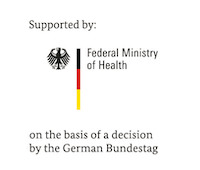Antiviral Drug Discovery against Hemorrhagic Fever Viruses
Emerging viruses such as Lassa Virus (LASV), Ebola Virus (EBOV) or Crimean Congo Hemorrhagic Fever Virus (CCHFV) are a major threat in their endemic countries and have the potential to cause epidemics. The development of specific couter measures has been hampered by a lack of commercial interest as the diseases caused be these viruses are rare and research and development is complicated by the need to handle these viruses in biosafetly level 4 laborytories.
One common approach to identify antiviral drugs for the treatment of such so called orphaned diseses, is drug repurposing. In this approach, libraries of drugs that have been developed for other applications are tested and efficacious compounds might then potentially be used off-label for the treatment of a different infection. The first step in this process is usuall to test a large number of drugs for aniviral efficacy and cytotoxicity on cells. Promissing compounds can be evaluated is dose response experiments on different cell lines. Finally, compounds with good antiviral efficacy and a favourable toxicity profile will evaluated in small animal models.
Recombinant reporter viruses that express for example a fluorescence proteine or a luciferase are good tools to facilitate these initial screening experiments as they simplify the readout for virus replication and allow for fast and large scale evaluation of drus collections. We developed a luciferase expressing LASV that can be used to screen for potential new antiviral drugs against this important emerging virus. Both commercial and academic drugs libraries are currently being screened with this virus. The development for similar screening assays for EBOV and CCHFV are ongoing.
![Antiviral compound screening with reporter viruses [Translate to English:] Der Ablauf von Screenings von Virostatika ist dargestellt. Die genetischen Komponenten eines rekombinanten LASV sind eingezeichnet. Zellen werden mit den Viren infiziert und mit Virostatika behandelt. Mittels verschiedener Analysemethoden wird getestet, ob das Medikament einen Effekt zeigt.](/fileadmin/_processed_/0/5/csm_EN_Antiviral_Screening_4fd8585163.png)



![[Translate to English:] [Translate to English:] Logo DFG](/fileadmin/media/Allgemeines_und_Platzhalter/Logo/Logo_DFG.png)
![[Translate to English:] [Translate to English:] Logo DZIF](/fileadmin/media/Das_Institut/Kooperationen/Logo_DZIF_01.png)
![[Translate to English:] [Translate to English:] Logo Leibniz Gemeinschaft](/fileadmin/media/Das_Institut/Kooperationen/Logo_Leibniz_Gemeinschaft.png)
![[Translate to English:] [Translate to English:] Logo Jürgen Manchot Stiftung](/fileadmin/media/Allgemeines_und_Platzhalter/Logo/Logo_Juergen_Manchot_Stiftung.png)





